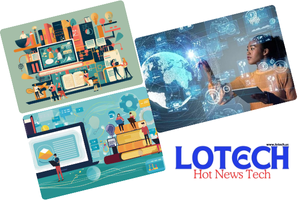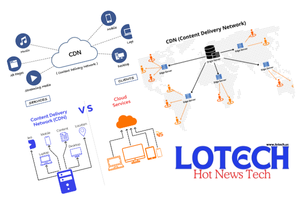In today’s digital era with smart phones and smart watches the hard cold tools of homicide have been forgotten with time. Some of the simpler technologies and processes are described by a ladder, labeled “low-tech.” But what exactly is low-tech? So let’s explain this notion in simple terms for everyone to comprehend and concentrate on the advantages of low-tech solutions, alongside with the examples and examples of their use.
What is Low-Tech?
It refer to those technologies or techniques implementing fewer machineries, less complicated and skills and simple instruments involve in total process. While high-tech is based on highly innovative electronics and software, low-tech combines manufacturability and robustness with sustainability. This approach may well rely on hand operations as well as techniques that have been developed and are well-proven.
Characteristics of Low-Tech
- Simplicity: Low-tech solutions are not complicated, easily explainable and usually do not involve technical knowledge to control them. This characteristic of makes them easy to use by many people including those with little or no computer knowledge.
- Durability: This means that simple gadgets have lower probabilities of contracting or developing a fault as compared to complex gadgets with many circuits. They are frequently manufactured with material that is teak to severe conditions.
- Sustainability: Low-tech are most frequently associated with environmentally friendly activities. The solutions typically produce less CO2 emission and are often cheaper.
- Cost-Effectiveness: And as they do not require more expensive materials or require complex production, low-tech solutions are more cost-effective.
- 5. **Independence from Electricity:** Most of the low-tech solutions provided here do not require electricity so they can easily be used in the rural or even without power areas.
Examples of Low-Tech
- Hand Tools: Whether small, like hammers and screwdrivers or large, like shovels and saws, hand tools have remained indispensable for constructions and maintenance work for centuries.
- Windmills and Water Wheels: They are the age old equipments which are operated by natural sources of energy for purposes such as milling grain or to pump water.
- Composting Toilets: These toilets are socially and environmentally preferable to conventional sewage systems because they recycle human waste naturally.
- Kerosene Lamps: In years before the availability of electricity, kerosene lamps were the most common form of source of light.
- Passive Solar Design: This architectural approach incorporates the position of the building, choice of materials and natural air circulation for the purpose of making the maximum utilize of heat energy and the minimum utilization of energy.
Benefits of Low-Tech
- Accessibility: It Postmodern designing makes sense as the technical techniques postulated here are low-tech systems that normal people in the developing nations or even those with restricted access to current modalities can comprehend.
- Empowerment: It is because, unlike automated solutions, low-tech employs skills and knowledge of a person to address issues without requiring professional help.
- Resilience: During calamities or disasters for instance famine flood or even failure of electrical power low-technology solutions can assist where high technology have let down.
- Cultural Preservation: Low tech entails bringing out traditional practices and beliefs which keep culture afloat.
Intense Focus: Low-tech refers to the undergoes a series of particular orientations that make its particular application possible following special circumstances When examined closelypter 4 Specific Applications of Low-Tech
Agriculture
In the agricultural industry for example, practices such as crop rotation, pest control and even watering crops are practices that have been in practice even as long as one can imagine. But apart from enhancing the condition of the soil, the mentioned methods also help to decrease the need for chemical fertilizers and pesticides.
Education
Innovative teaching assistant, like chalk, book and simple experiment have been used in the past and still have been used currently to enhance teaching. These enables active participation in classes, practical appllications an the use of critical thinking.
Health Care
In most areas of the globe, primary health care interventions including traditional medicine and maternal practices are inevitable. As a rule of thumb these are cheaper and more easily implemented than their high tech counterparts.
Conclusion
In an environment where people are obsessed with high technology, low tech speaks about the importance of simplicity and effectiveness. If we start embracing low technologies instead of always trying to come up with/q> Whether it is a handyman repairing something in a house or a farmer tilling his land, low tech presents a chance to combine contemporary individual experience with ageless knowledge.
But low-tech reminds those of us living in the interconnected third millennium that sometimes the best approach is as simple as it gets. In concluding, the realization of low-tech will create a unique roadmap and sense of direction to forge a novel, modern but frugal world that serves as a compass pointing to form and function competence originating from history.



